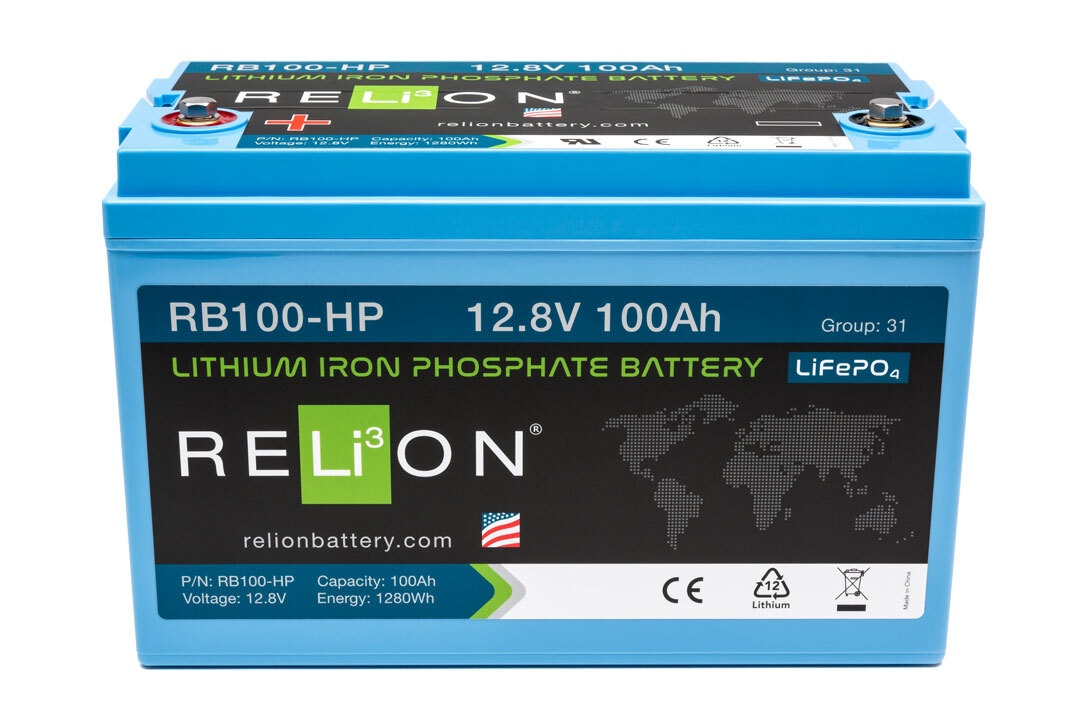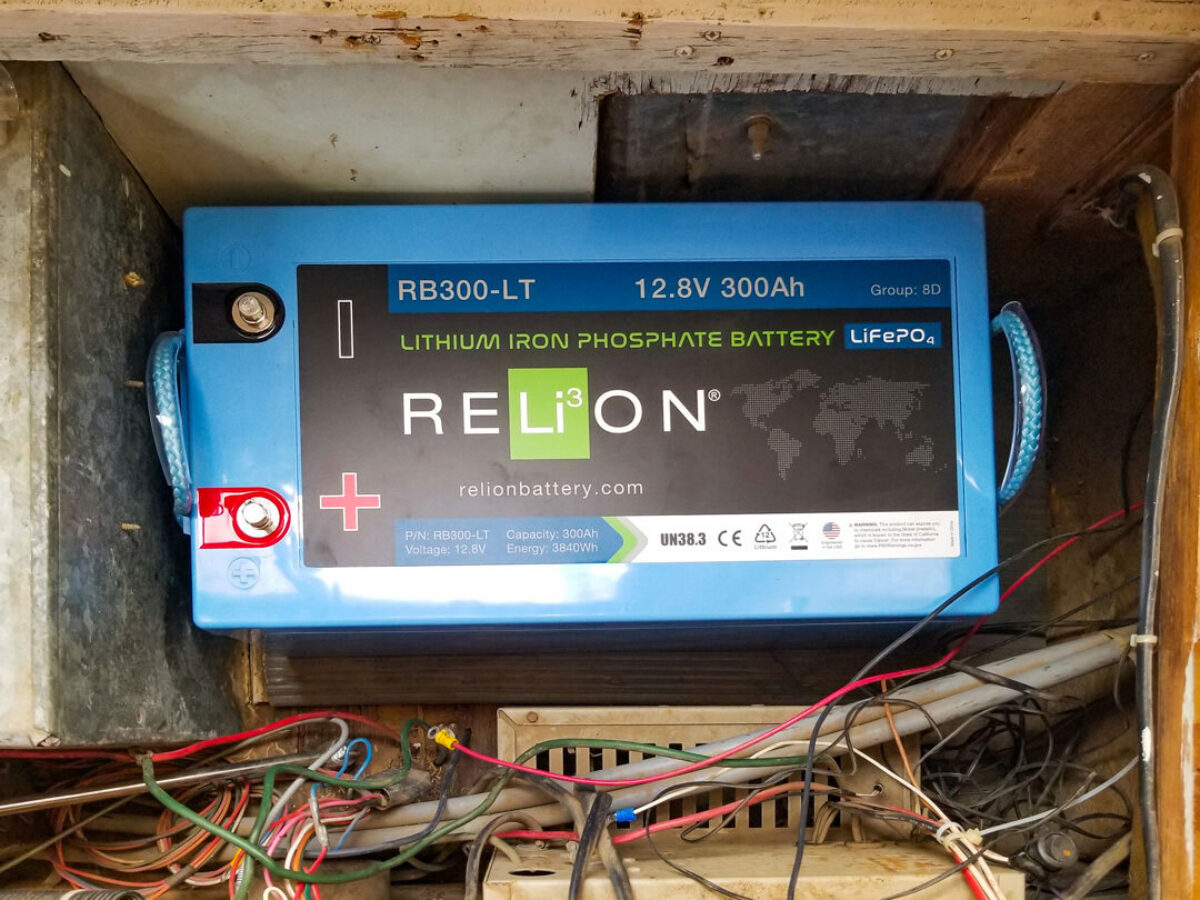Batteries are just batteries, right? They store energy and give it off as needed. Before choosing a battery type, consider what you will be using it for. One battery type will be more suited to your specific purpose than another. Read on to learn more about how these batteries work, what they are used for, and the diffences between lead-acid and lithium deep cycle batteries.
Deep Cycle Batteries vs Starter Batteries
Starter batteries are the sprinters of the battery world. They are designed to put out a lot of power for a short burst. The point usually is to supply the power needed to start something up, like a motor, which then runs on gasoline. They are not designed to discharge much before being recharged and a deep discharge can hurt the battery's lifespan and performance. This is the type of battery you'll find in a car. Once the motor starts, the alternator begins charging the battery back up to full charge. However, this isn't the only application for batteries. Sometimes you need batteries that can continuously supply power for long periods of time, such as to run an electric vehicle.
These are deep cycle batteries — the marathon runners of the battery world. Rather than a short burst of lots of power, they supply a lesser amount of power but for a much longer period of time. Here the batteries are used to run the vehicle instead of gasoline. You may be wondering if both capabilities exist in a single unit. In short, yes, they do, and this is what is known as a dual-purpose battery.
What Are Dual Purpose Batteries?
Dual-purpose batteries handle both starting and cycling making them an excellent choice when you are working with a small footprint. They deliver powerful cranking amperage for easy starting, and low amps draw service for reliable auxiliary power. A perfect example of this would be RELiON’s HP series of lithium batteries that are designed to handle getting you started and keeping you running.

Deep Cycle Battery Discharge Capability
As mentioned, deeply discharging a starter battery will hurt its performance. However, deep cycle batteries not only are designed to put out power for a long period of time but also can discharge much more of their stored energy.
The amount you can safely discharge varies from battery to battery. Some batteries can only handle discharging 45% of their energy reserves, whereas others can safely discharge up to 100%.
Just be sure to check the manufacturer's recommendation for your specific battery.
Uses of Deep Cycle Batteries
We've already touched on the fact that familiar car batteries are starter batteries. So what are deep cycle batteries used for? In general, for anything that needs continuous power for longer periods of time.
- Electric golf carts
- Electric floor cleaning machines
- Electric scissor lifts
- Electric wheelchairs
- Electric scooters
- Electric forklifts
- Recreational Vehicles
- Trolling motors on boats
- Navigational devices on a boat (when the main motor is inactive)
- Renewable Energy systems
Types of Deep Cycle Batteries
There are also a few types of deep cycle batteries. While they perform the same function, the materials used to build the battery vary. Thus, the different types of deep cycle batteries each have their own pros and cons. Let's look at the main ones here.
- Flooded Lead-Acid
- Gel and AGM orValve Regulated Lead-Acid (VRLS)
- Lithium-Ion
Flooded Lead-Acid Batteries
This is the oldest type of battery that is still in use. Also called a wet cell, the name comes from the battery having a liquid electrolyte inside, consisting of water and sulfuric acid. If you've ever worked on an older car, you may be familiar with having to open the tabs at the top to add water to the battery on occasion. With deep cycle, flooded lead-acid batteries, adding water is needed more frequently.
Because of the liquid, these batteries must stay upright at all times. They also require good ventilation. Batteries produce hydrogen gas and it must have a way to escape. It is not uncommon for electrolytes to spit out of the vents during charge, leaving acid residue on the battery cover and often even on the battery tray and vehicle chassis.
Overall, flooded batteries require the most maintenance including; adding water, cleaning acid residue from battery covers, terminals, and surroundings. These types of batteries are also quite heavy when considering the ratio of battery weight to the amount of energy they provide. For these reasons and more, their popularity is waning.
Valve Regulated Lead-Acid (VRLA) – Gel and AGM Batteries
Gel and AGM batteries are other types of lead-acid deep cycle batteries, but with a big improvement. They don't have free-flowing liquid electrolytes in them and therefore don’t require any addition of water. They are more expensive though and often don’t last as long as flooded batteries in more demanding applications.
Instead, Gel batteries use a gelled electrolyte and AGM batteries use an electrolyte absorbed in glass matt. If they are used and charged properly, they won’t release any gases, but in the event they overpressure, the safety valve will open and release the buildup. As such, they don't have to remain upright and they virtually eliminate any spillage, cutting down on the corrosion problems common with the flooded variety. They are very popular for use in boats, recreational vehicles, and more.
Lithium-Ion Batteries
Lithium-ion batteries are quite possibly the wave of the future when it comes to deep cycle batteries. They require no maintenance, can be discharged more deeply without affecting their lifespan, and charge much faster than other types of batteries.
Because of the higher upfront cost, their popularity has not soared as quickly as you might expect. The fact that they last much longer than lead-acid batteries, can actually make them similar in price or even less expensive over the long run.
And they have many other benefits over their lead-acid predecessors. They are lightweight, they provide their rated capacity at any rate of discharge, they do not get damaged from being left or operated in a partial state of charge, they provide more power throughout the discharge cycle, and more.
What Deep Cycle Battery Has More Capacity?
Capacity differs greatly between lead-acid and lithium batteries due to their inherently different chemistry. The major difference is their capacity in relation to their rate of discharge. Lithium batteries can provide up to 100% of their rated capacity regardless of their rate of discharge. Lead-acid batteries provide significantly less usable energy with higher rates of discharge. Although both battery types may lose capacity in colder weather the changes in performance are far less drastic with lithium. At 0°C, for example, a lead-acid battery's capacity is reduced by up to 50%, while a lithium iron phosphate battery suffers only a 10% loss at the same temperature.
How Long Do Deep Cycle Batteries Last?
The lifespan of a deep cycle battery is affected by a few factors. More factors impact the life of a lead-acid battery than lithium. In other words, lead-acid batteries are easier to abuse. Proper maintenance can extend the life, as well as discharge and charge it correctly. Improper watering, over-discharging, over-charging, and under-charging a lead-acid battery regularly can greatly reduce its lifespan.
Lithium batteries don’t require watering, so the issue of improper watering is eliminated. Lithium batteries are not damaged by a partial state of charge, or under-charging, so that issue is also eliminated. Lithium batteries can be damaged if they are severely over-discharge or if they are charged at a high current below freezing temperatures, thereby reducing lifespan.
Heat affects the battery as well. Higher temperatures degrade the battery much quicker.
Because of these factors, plus the fact that different types of batteries have different lifespans, it's hard to state a specific time frame. Check the manufacturer's specifications for your battery to get an idea of the capabilities of your battery.
Which Deep Cycle Battery Should You Choose?
Now you understand a little about deep cycle batteries. It's obvious why they are important for many different applications. If you still have questions about which battery to choose for your needs, don't hesitate to contact us! We'll be happy to answer your questions and help you decide on the right battery.
